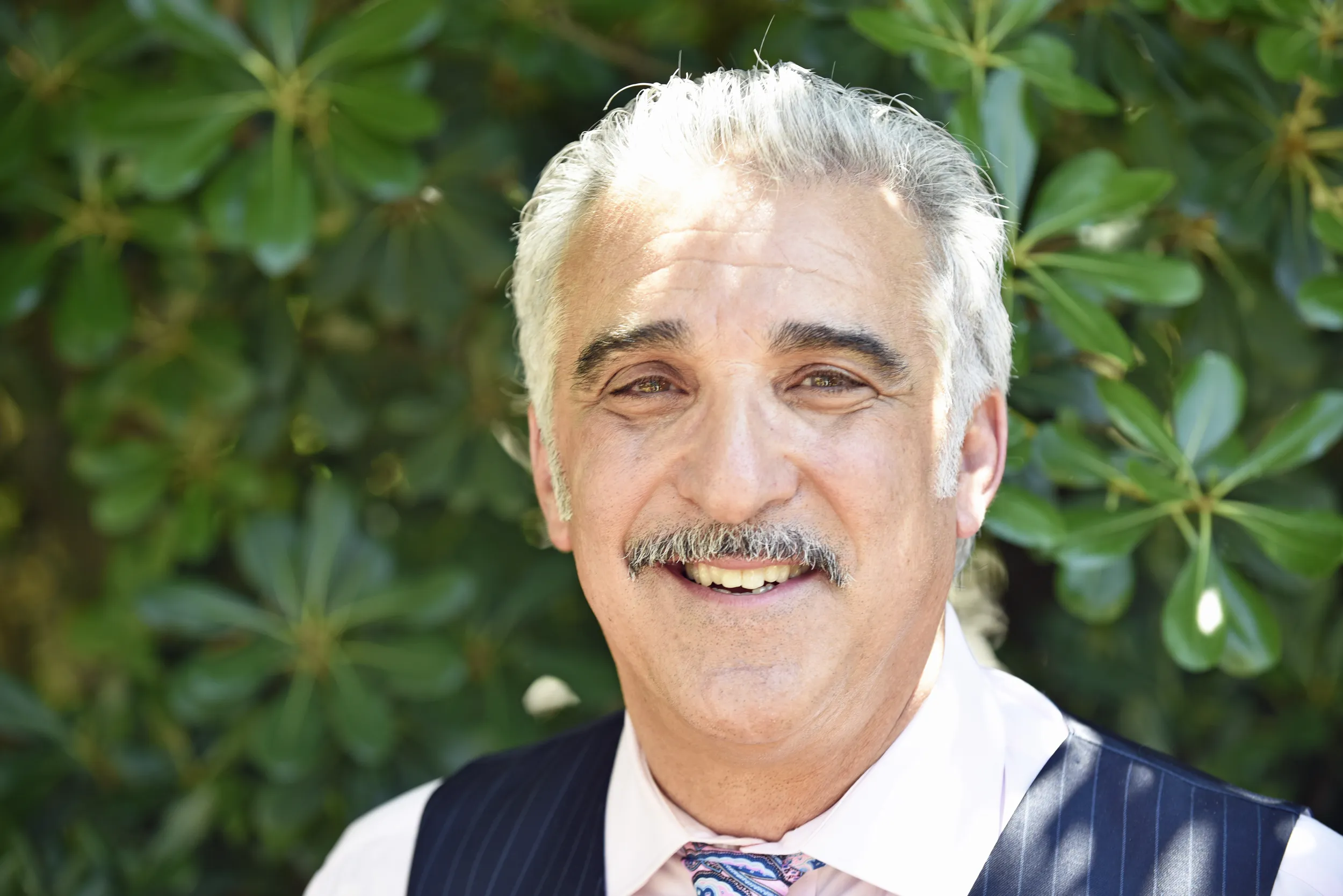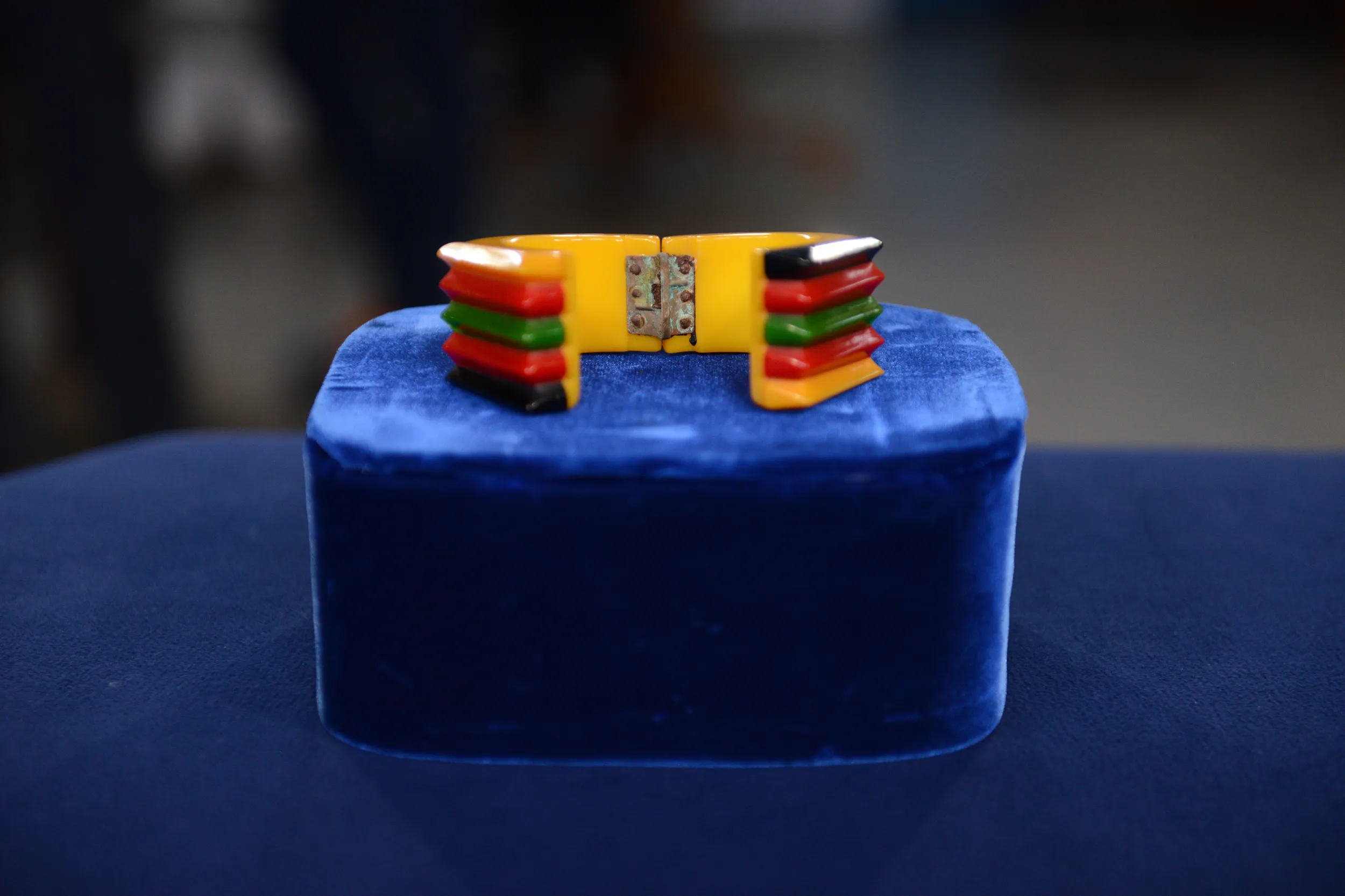APPRAISER: You brought in a bracelet.
GUEST: Yes, it's a piece of Bakelite bracelet.
APPRAISER: Where did you buy it?
GUEST: I bought it offline.
APPRAISER: And how much did you pay for it?
GUEST: About $500.
APPRAISER: That's a lot of money to pay for a bracelet.
GUEST: It is, it's a lot. I saw it and I thought it was really pretty.
APPRAISER: I mean, you say Bakelite, most people wouldn't know, and they would probably look at it and say…
GUEST: Right
APPRAISER: "Oh, heck, she bought a bracelet for $500 made out of plastic."
GUEST: Exactly!
APPRAISER: Right? right.
GUEST: I'm a little cuckoo that way.
(laughs)
APPRAISER: Bakelite was developed for industrial purposes back in 1907 by Leo Baekeland. They used it for things like the old kitchen utensils our grandparents would have, like the mixer with the red handle.
GUEST: Oh, yes.
APPRAISER: That would be Bakelite. While the material was invented by Leo Baekeland, we really don't know who made this bracelet. There was a lot of manufacturers in the business of making Bakelite. Jewelry people gravitated to it because it wasn't made like traditional plastic that was injection molded; it was carved from stock pieces. The makeup of it, it was a chemical makeup of phenol and formaldehyde. But because they could carve it, they could cut things like these triangular sections and then they could polish them. And then it also was extremely carve-able. You can see on the edges those little divots put in there. It came in many, many different colors. The colors had all these great names, like Mississippi Mud.
GUEST: Oh, wow!
APPRAISER: This one's called Butterscotch. There was other ones called Salmon and Spinach. I mean, they're just great names. Now, they also came in a green and a red. The green one and the red one usually sell for more money than this Butterscotch one.
GUEST: All right.
APPRAISER: Most of these bracelets come out of that sweet spot, around 1920 to 1935. So it does have some age to it. Your bracelet is called the Philadelphia bracelet. It got that name from a show in the early 1980s in Philadelphia. It sold for quite a large amount of money, and everybody in the jewelry and Bakelite community was surprised, so everybody was saying, "Hey, did you see what that Philly bracelet sold for?" And that's how it got the name, Philadelphia bracelet. There was a period ten, 15 years ago, people knew they were valuable, and they started making what we in the trade called "fakelite."
GUEST: Uh-huh.
APPRAISER: Started making it out of plastic. There's a few ways to test Bakelite to make sure that it's correct, but this is absolutely Bakelite.
GUEST: Oh, cool.
APPRAISER: If this were to go up for auction today, this bracelet would bring $2,000 to $3,000.
GUEST: Oh my gosh, that is fantastic!
APPRAISER: I think it's fantastic, I really do.
GUEST: I really got my money's worth, didn't I?
APPRAISER: I'd say you did. I'd absolutely say you did.
GUEST: That is so cool!












